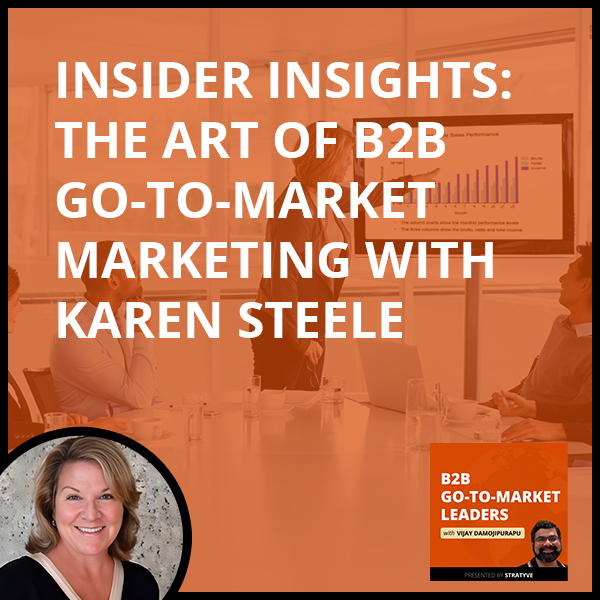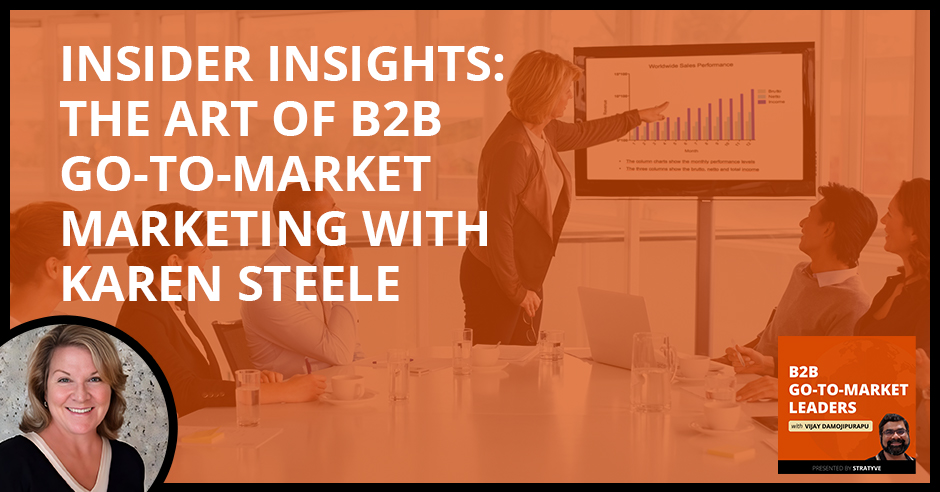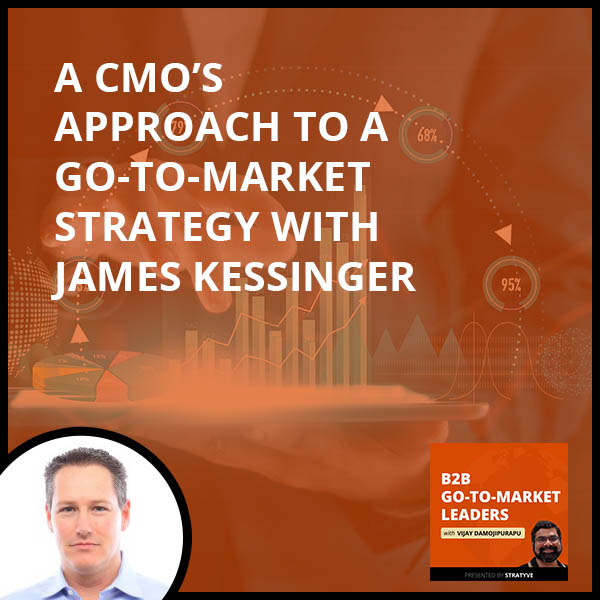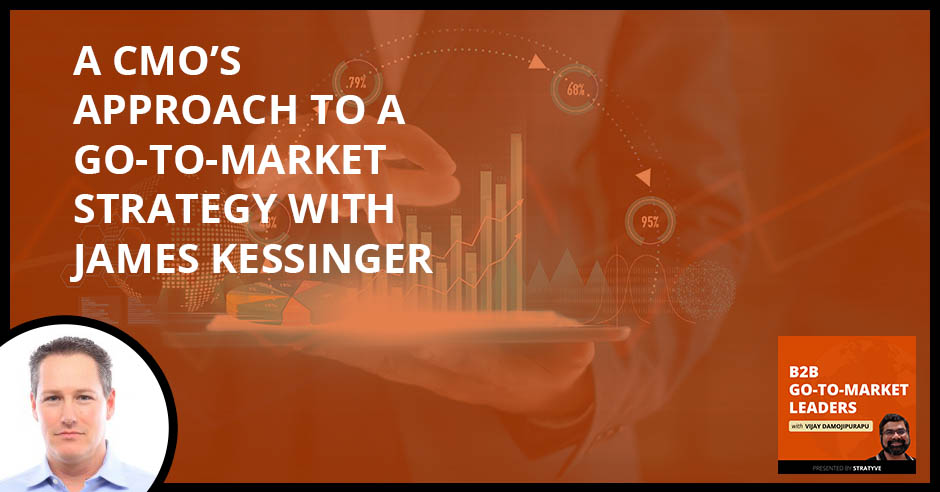

Success in B2B marketing requires not only a deep understanding of the market, but also a willingness to embrace change and innovation. In this episode, we have Karen Steele, Founder of Alloy, CMA of Sendoso, and a seasoned marketing executive of several tech companies. With an impressive resume that includes stints at Apple, Next Computers, Marketo, and VMware, Karen has a unique perspective on what it takes to succeed in the competitive world of B2B marketing. Today, Karen delves into her career journey, discussing everything from her early days in Silicon Valley to her current role as CMO of LeanData. She discusses the challenges and opportunities facing B2B marketers today and shares strategies for achieving success in this dynamic field. Tune in now and hear Karen’s career journey!
—
Listen to the podcast here
Insider Insights: The Art Of B2B Go-To-Market Marketing With Karen Steele
I have the pleasure of meeting and talking with Karen Steele. Karen has a very storied career. She has worked at big brands, including Apple and prior to that, NeXT Computers, for those of you who recall that brand. She has been with Marketo, VMware, and several others. Without any stop, let’s get into the detail. I’m super thrilled to have you on the show, Karen. Welcome.
Thank you. I’m thrilled to be here and I’m pleased to meet you. I think highly of the show, so I’m delighted to be a guest.
You’ve had a very storied career and you’ve worked at large companies. You have worked at young companies, big brands, and so on. My question to you and all the guests as always is how do you view and define go-to-market?
It’s a great question and a great icebreaker opener because it’s the crux of as a pure B2B tech marketer and that’s what I am. The go-to-market has evolved over the years. The heart of go-to-market is about how you generate revenue through whatever channels you generate revenue through with a great product that has product market fit and ultimately creates a great customer experience.
As my career matured over the years, for a long time at the beginning of my career, go-to-market was very siloed. Sales did sales and marketing did marketing. We didn’t even have this notion until we got into the SaaS world of customer success. Customer support and things like that were often siloed, and the product was often siloed as well.
The way I define go-to-market now, every aspect of go-to-market is it’s a four-legged stool with a pretty important foundational underpinning. I’ll describe the four legs first. Sales has to have a seat at the go-to-market table. That could include business development or partners, not just direct. Marketing needs to have a seat at that table. The product needs to have a seat at that table, and then customer success.
Those are the four lynch-pins. The thing that glue or the foundational piece that in my mind makes go-to-market successful is something a lot of companies call revenue operations. It’s all the people, processes, technologies, and data that bring all those things together to be able to generate the strategy and execute all the different motions, whether it be a channel play, an ABM play, a freemium product, or a product like growth strategy. Whether you’re marketing to SMB or mid-market, you might have different plays, different products, or different pricing. That team, which is so critical in today’s fast growth company is the most critical thing, so sales, marketing, customers success, and product with the underpinning of revenue operations.
That’s the most complete definition I’ve heard so far. I say that for two reasons. One is when I ask this question with many of the guests, they typically cover 2 or even 3 functions. It’s sales for sure, marketing, and then support/success. Somehow, they omit the product piece. You are one of the few guests who has called out the product as one of the centers of pieces of go-to-market. That’s one.
The second is you also highlighted the importance of revenue ops. Granted, there were marketing ops or sales ops before over the last 10, 15, or 20 years. Over the last 3 to 4 years or so, revenue ops as a function have taken more of the center stage and visibility for obvious reasons. If you are looking to tie all these four functions, you need an organizational team that’s sitting outside of each of these functions.
That’s right, and it is held accountable. If you think about the amount of investments companies make in technology across everything I talked about, sales, marketing, CX, and product, somebody has to pull and consolidate all those systems together so you get one single version of the truth. The toughest job for revenue ops leaders now is still living in a world of silos. Not every company has adopted bringing all of those operational people into a single team. They may still operate in different places in the organization but if there’s a strategy and philosophy around revenue ops and there’s a single version of the truth, I think you have a lot of efficiency. I’ve been a huge proponent of revenue ops for quite some time.

A good segue into this, you’ve gained a lot of wisdom and insights over the years. Can you tell and share your story? Where did you start in your career after schooling, undergrad or college? What led you to who you are now?
I started my career at Apple in the early days. When I say the early days, not the Apple that you know now. Apple was a hardware company. They were a computer company for a very long time and became a multi-billion-dollar company building computers. Now, when we think about Apple, we think about these devices and they’re more like a consumer electronics brand. I joined Apple while I was in school and went to school through my career at Apple.
I started in the marketing communications in-house agency side at Apple. Apple was one of the few companies at the time that had an in-house agency that cared about brand and messaging, being close to the customer, and selling to a lot of different audiences at the time. I learned a lot in the first eight years that I was at Apple. It was the backbone of forming who I became as a marketer. That’s when I fell in love with marketing and the creative process, and having an impact on the customer experience.
In many ways, I feel that Apple invented technology marketing because this is the 1980s. In the 1980s, people aren’t marketing technology and computers but Apple was trying to make the world a better place with technology. That’s what they have done over the decades since.
Talking about Apple, that one ad comes to my mind and it sticks in everyone’s mind.
That was 1984. They did some other very brilliant advertising and things over the years. I did two tours of duty at Apple. I was at Apple for the first eight years, mostly on the in-house agency marketing, communications, and advertising side. I went to NeXT, which for those who don’t know, it is the company Steve Jobs founded after he was forced out of Apple.
A brilliant technology. It was a software and a hardware platform but the crown jewels were the software and it later became the Apple OS that we know and love now. Apple bought NeXT much later down the road. I had an amazing career at NeXT and got to work with Steve Jobs directly for about five years. He was effectively the CEO and the CMO because Steve is a marketer at heart. That’s where a lot of my foundational learning and things came from.
After I left NeXT, I did go back to Apple. There was an interesting role. I went back to a time when Apple was a little bit schizophrenic. They had invested in a lot of different categories of technology but it was a plum job. I went back to run consumer brands and advertising for what was then a product called The Performo, which was an all-in-one software and hardware solution that was designed for families with children. That was a super fun run.
Was this around the time when John Sculley was running Apple or was it Steve Jobs?
John was on his way. Michael Spindler had already become the CEO at this time when I returned. A gentleman from the chip industry, Gil Amelio, came in, which you could argue was good or bad but it was not before Steve Jobs eventually came back and turned Apple into what most of us know and love today.
That was a number of years early in my career but it probably still sticks with me as the most formative. I worked with some of the best and the brightest and very advanced technology in both Apple and NeXT. I was young and Apple was a lot smaller when I started. I think I was employing number 2,000 at Apple. I got a lot of opportunities to learn. I became a manager of people at age 23 because Apple fostered that kind of growth and helps put people through school and encourage people to work and get their degrees at the same time, etc.
That’s very foundational for my career. This wonderful thing called the World Wide Web was starting to take off. I got introduced to some newer technologies. This was the Netscape Era where people were starting to build cool applications that you could access through web browsers. That’s when I went to my first couple of startups. I’ve had the good fortune of pure tech. My whole career is pure tech.
I’ve worked for large iconic brands. I’ve worked for small brands that some of you wouldn’t have heard of and early-stage startups. I’ve worked for a medium-sized company. I’ve done both public and private. It has been a fascinating ride. The second half of my career has been since about 2006. It’s the very early days of SaaS. It has been all SaaS software solutions. You mentioned VMware. I was also at a company called Informatica. I’ve done a lot in the data and analytics world but I’ve done a ton in sales and marketing tech as well, which I enjoy.
Those brands stand out, especially in the sales tech and market tech. I’m not sure if Saba software falls in that or not, but another one that falls in that is LeanData and Sendoso for sure.
Saba was an interesting one. Their roots were in eLearning but they were trying to break through at the time to talent management, which was hot. These were the days of SuccessFactors, Taleo, and a couple of the innovative companies that got bought up by some of the larger enterprise brands. They were more selling to HR, but super good tech and great experience there as well.
That’s very impressive. Before I move off this topic, I don’t have many guests who had the fortune of working with Steve Jobs and the team. Are there anecdotes or stories of working with Steve Jobs that come to mind that you want to share with the audience?
He’s one of the most passionate and brightest. I would call him a marketing genius. People have heard and read stories about how demanding and difficult he was and could be. Somehow, I made my way into his circle of trust. I proved myself early. I had at least one boss that was a buffer initially, which helped him earn respect for me without me having to deal with him every single day on a daily basis.
Eventually, we built a strong rapport. He was involved in every aspect of marketing and the marketing experience. He was involved in every aspect of product design and the product experience and aesthetics, which for anybody that remembers what the NeXT machines looked like. They were beautiful, slick, black magnesium workstations with the best software. NeXT grew up helping corporations including the government build sophisticated custom-developed applications. That was what they did best. Those applications got displayed on these beautiful monitors that had all the latest advancements like pixel as technology, etc. It was a beautiful product experience.
When you’re trying to come up with a new creative designer campaign, you must have had a lot of interactions or input from Steve Jobs himself, I would assume.
He was involved in everything from product packaging to advertising campaigns, product naming, and messaging. Generally, he gave me enough autonomy that I never felt suffocated. I could get my job done and the buck stopped with him. For all intents and purposes, he was the CEO but at the same time, he behaved like a CMO every day.
I didn’t intend to ask this question but now that you have this unique experience, my question to you is, what made you break into that circle of trust with the great Steve Jobs?
It helped that I had a strong leader who respected me a lot that was initially a buffer. That gave me a little bit of time to prove myself in the background and not just be thrown in front of Steve for him to judge me. Knowing his personality, how opinionated and smart he was, and knowing what he cared about, I listened a lot before I spoke. I certainly had opinions and I voiced opinions when I believed that I had a strong point of view.
He would listen thoughtfully and he’d tell me if he didn’t agree with me. Often, we got to a commonplace. It was a combination of initially having a buffer where I wasn’t just thrown to the wolves, so to speak. Some people didn’t have that luxury. They immediately were a direct report to him and there was no buffer in between. I was fortunate to have a guy Steve respected a lot for the first year. During that timeframe, he learned a lot about me and my style. We spent a lot of time together, and I knew what worked and what didn’t.
I knew what I could put in front of him and what I couldn’t put in front of him. I did challenge things that I didn’t agree with. I didn’t always win every argument but I was level-headed. It always came back to we have to do what’s right for the business and for the customer. Through most of my journey there, that’s what we did.
Switching gears on a lighter note, how do your family members describe what you do for a living or what you’ve been doing and what you did for a living?
When I was working at NeXT, I bought a house and it was being remodeled. I moved in with my dad for about three months because my home was being remodeled. This is before we had cell phones. I had to make sure that Steve’s admin had my updated phone number if he needed to reach me in the evening, which was frequently.
I happened to still be at the office this particular evening, so he called but I was at my dad’s house at the time. My dad generally knew that I was in marketing and what I did. When Steve Jobs called the house, my dad ended up speaking to him for twenty minutes. I think he learned a lot about what I did because Steve told my dad how much he trusted me and relied on me and what a hard worker I was.
I could have had nobody explain it better to my family than it coming directly from him. It’s hard to describe to the general layperson who’s not a technology marketer. Maybe it’s different in B2C, where you say, “I work for Clorox. I’m a brand manager.” In B2B tech, you talk about, “We help create pipeline and promote our products, try and create customer affinity, customer loyalty, and build retention.” You get into language that if you’re not a tech person or a tech marketer, it’s hard to understand.
In B2B tech, we help create pipeline, promote our products, create customer affinity and loyalty, and build retention. Share on X
From the beginning, everybody knew that I came from the communications world. I was a marketer. Generally speaking, because a lot of my other family members were in tech too, people understand. If I’m at a cocktail party with a bunch of non-tech people and somebody asks what I do, I keep it very baseline and say, “I’m in marketing at a software company.” I don’t go much further than that because it has a lot more legs than that. It’s hard for people to grasp what we do every day.
Great story. I would imagine your father must have felt proud.
He went to the golf course the next day and bragged all day long that he had had a conversation with Steve Jobs, and that Steve had called the house, to the point where my sisters were all rolling their eyes like, “He cannot keep telling this story. This is ridiculous.” I think it was special for him.
Switching gears again, back to your role. You were leading marketing and the chief marketing officer at Sendoso. Broadly speaking, I don’t think it makes sense for us to get into the Sendoso piece yet but you’ve done a whole lot of other stints and roles. If you were to go back maybe 1, 2, or 3 years, can you share a GTM success story? First of all, how do you define GTM success? What are the key ingredients that led to the success story of yours?
I think this is true at Sendoso as well. The first question you asked me about is defining what is a successful go-to-market and what does it mean. There are great people at Sendoso. We had an awesome VP of rev ops. Not every company you walk into has that. Fantastic leader in rev ops, head of sales, head of customer success and product, then with myself.
It wasn’t to say some of these people weren’t meeting on and off, but it wasn’t a weekly strategy meeting. I did what we called a core go-to-market leadership meeting for that team of five, those key functions that I mentioned at the beginning. We talked strategy and we talked if there were people issues in terms of gaps where we were running into barriers or what have you.
It wasn’t an execution conversation. We didn’t sit in a room and talk about what’s the forecast and how we are going to launch this product. It’s different places we did that. We talked more about the strategy of how we are going to hit the number this quarter. What is that and how are we going to hit our net retention goal? What kind of data do we need to share at an executive team level so people understand the scale and growth of the business?
We were at the same time bringing on a whole new enterprise selling team. When you’re onboarding a selling team and it takes time to ramp people, you have different things going on and the selling isn’t moving as quickly. We talked more about the strategy on how to scale and move the business forward. If we did get into other conversations, we did launch a PLG or a product-like growth premium product when I first joined Sendoso.
We did talk about what was the strategy because we didn’t want that to cannibalize existing sales as a free product. Those were some of the conversations that we had. What it led to in terms of the question you asked is we didn’t have these broken silos. We all knew what the key priorities for each of our teams were.
We didn’t have to go to a quarterly QBR to learn that because we had these weekly meetings. We then had these pipeline meetings and forecast meetings where you got more into the details but we had already outlined the strategy. What we did as a team is architect that strategy, knew enough about what might come up in a forecasting call or a pipeline call as we were going through numbers, and get more specific about how certain programs were affecting certain things or certain gaps, and how personnel were affecting certain things.
We had already talked about those in advance. That’s critical for a go-to-market team to have that synergy, openness, and transparency so that you can go into the tougher meetings where other executives are involved. You’re doing the weekly forecast and you’re doing the weekly pipeline updates. You’re doing your QBRs for the business segments, etc.
Did you have these meetings with the rev ops weekly? It sounded like that.
It’s weekly.
It’s rev ops. Who were the team members? Was it you or the rev ops leader?
My self, the rev ops leader, EVP of Sales, Chief Product Officer, and the VP and SVP of Customer Success.
You were putting that GTM definition into practice.
Every single week. I want to say that we did that at LeanData as well. We probably did not include the product as well as we should have but we sat with sales, marketing, customer success, and a version of rev ops. Even though LeanData talked a lot about rev ops. They do have a very strong rev ops leader now but at the time, we still had a strong sales ops person and I had a marketing ops person. They weren’t necessarily in the room because those were more second-level meetings. It was still philosophically very similar but I don’t think the product was as involved as it could have and should have been.
For you, as a CMO, going into these strategy meetings with the cross-functional leaders, how did you prepare for these meetings going into the meeting? Did you have a template?
It was fairly open. I would ask people. I was the meeting leader I supposed. I set up the meetings and I would ask people if there were particular agenda items. If there weren’t, I’d come into the meeting with a list of things I thought we should talk about. That would usually generate other discussions and other topics that other people that were either an offspring of one of those topics or something very different.
I wouldn’t say they were templatized or always had an agenda but the objective was let’s come to the table once a week. Let’s put any issues on the table, and strategy issues around what are our go-to-market challenges and issues if we’re about to launch a new motion, like the premium that I mentioned. What might our issues be with that? Pricing might come up in some of these meetings. Competitive would come up in some of these meetings but it was more at that level, which helped informed a bunch of other more executional meetings with some of the other team members.
Karen, that was fantastic the practice that you did at Sendoso, where you had a strategy meeting with all the key cross-functional leaders. I’m sure that must have played a key role in your GTM success at Sendoso. On the flip side, we all know that GTM is not always up and right, and going up always. There will be bumps and failures. Can you share a GTM failure story that comes to your mind?
Most of the GTM failure stories that you’re going to ever hear are when all those things, even if they’re siloed. They don’t come together into one leadership mode and you get the finger-pointing, “It’s a sales problem. It’s a marketing problem. It’s a product problem.” I’ll go back a long way, I mentioned that GTM has evolved over the years. I started my career in a world where sales was sales and marketing was marketing. We didn’t have the notion of customer success. The product lived in a different universe oftentimes.

I’ll tell an Apple story that is an interesting one and it was a GTM failure that fortunately got corrected down the road. I was lucky enough to be part of the launch of the first Macintosh, which happened in 1984. It was a phenomenal experience. At that time, Apple sold mostly through the channel. There were Apple resellers in the channel. This was a huge channel business development part of the go-to-market strategy.
We had this great idea of marketing promotion to do something called Test Drive a Macintosh. The idea was you could walk into any number of resellers and literally get a Mac for free, take it home, and play with it over the weekend. If you liked it, you could come back and buy it for a discounted price. No computer company had ever done anything like that.
I don’t think they’re even doing it now.
It was a phenomenal idea at the time. It was called Test Drive a Macintosh. I was part of the team that launched that. Everything from Apple is famous for its packaging and a lot of its promotional stuff. If you went to a reseller, you got this black glove that was logo-ed with Apple. This is back when there was a six-color logo, etc. It was a great idea in practice but we launched this program right before the holidays, which is the busiest time of year for any reseller.
What happened is the resellers got inundated with fulfilling this promotion on behalf of Apple that they weren’t going to make any money for that weekend right before the holidays. It bombed because the resellers were up in arms. That was a classic case of our channel team, our marketing team, and our product team weren’t communicating well. The timing was off.
It bombed and it left a little bit of a black eye in the confidence of the reseller channel. In every failure, that should be the case. You learn from it and we picked up the pieces. We relaunched the same promotion months later in a much different season so that we weren’t competing with holiday sales and it turned out to be very successful. It’s a classic case of GTM being very siloed, particularly on the channel side, but we didn’t have our ducks in a row. That is one that comes to mind.
That’s a fantastic story. Nowadays, at least for some of the leading brands and companies, what they do is a pre-mortem versus a post-mortem, and identify all the failure levers or failure points. Back in those days, if there was this practice, this is one way we could have avoided it, but hindsight is 20/20. We all know that. Given your vast experience, what do you think or what are your 1, 2, or 3 superpowers that stand out? Why do people reach out to you or go-to-market?
Some of these go back to the fabric of where I come from. Apple gave me many of these gifts. I know how to build brands, brand strategy, and messaging that is differentiated and matters and it’s going to connect with the buyer. A lot of people come to me because they know that ultimately, I can help put your company on the map and make you look ten times bigger than you are if you have a messaging challenge.
In the case of Sendoso, this was certainly not all my doing. Sendoso is a fantastic product. The reason I did a fractional gig with them is because I love the product. I was a customer three times. The first time I used the product and then subsequently thereafter, they didn’t have any strong competition. Suddenly, a couple of smart companies literally copied their playbook and started using the same messaging that Sendoso had used three years ago, and was undercutting them on price.
All of a sudden, there was this huge differentiation challenge in terms of messaging, and also being clear on the category because corporate gifting is not an essential category but direct marketing automation is. That is a channel that every company should think about in the same way you think about ABM or advertising or your website or anything else.

Direct marketing has been around for decades as we all know but now being able to do it in a personalized way with physical goods that reach somebody immediately, the emotional connection to somebody opening up a package versus getting a piece of highly-priced collateral in the mail is very high. In terms of superpowers, it’s probably knowing how to brand and message a company super well, and turning that into an amplification mode, whether that be through influencers or thought leadership. It’s not just the Foresters and the Gartners of the world. You can do so much now in the B2B space with G2 and TrustRadius and use your customers as leverage.
Customer marketing is probably another superpower, whether it be building communities or using your customers for advisory and working with customer success teams for adoption, strategies, and co-owning with customer success a net retention number. Net retention should not only be owned by customer success. That is a company metric, but marketing plays a role in that too. Those would be some of the things I would mention.
Going back to your point, the concept of gifting is very simple but not many companies and brands do that. A few years back when I was head of marketing at a CDC startup back then, I received an envelope from Marketo. It was from one of the SDRs or eco managers from Marketo. The envelope contained nothing major. It’s a serial bar and a nice handwritten letter. That caught my attention. I still remember that “gift” to this day versus collateral.
Even an email. If you think about a marketer like you in those days and any marketer out there, we’re inundated. It’s not just email now. It’s all the stuff we get on LinkedIn. It’s all the ads we see on Facebook and Instagram. By the way, Facebook can personalize ads pretty well and we’re inundated. If you can get something that can break through that clutter, the more personalized, the better, or even the more clever. Sendoso has so many great examples of customers that have done some cool things. It’s not to just open a door to set a meeting, but something to make it super memorable that ties into what the person is all about.
I know we’re going to run out of time here but I want to tell one quick story because this one is near and dear to my heart. I get inundated just like I described the rest of every marketer I know. I occasionally get back when I was in an office, it was easy to ship a gift to me. You would get somebody’s branded coffee travel mug. I need another travel coffee mug like I need a hole in my head, but when somebody takes the time to figure out who you are, not as a target to them but what your interests are.
We’re all on Zoom now so it’s harder, but maybe you have a baseball, football, or hockey poster on your back wall or you have an affinity for a particular team. I got a package and I rarely respond to stuff on LinkedIn but whoever this SDR was, he wrote a very thoughtful note. I had to give him my home address for him to send me something. I thought, “Let’s see how clever-creative this person is because I liked what he wrote.”
I’ve told this story many times but I still think it resonates. I put nothing personal on LinkedIn but I do have a Facebook page. This guy went and found me on Facebook. He researched me on Facebook and realized I have two dogs and they have their own Facebook page. When I got a package delivered to my home, it was not even in my name. It was delivered to Louie and Henry. Inside, there was a personalized card for my dogs that said, “Please enjoy.” It was treats and toys and other little amenities for my dogs. Who wouldn’t respond to that? You broke through to something that matters to me.
It’s figuring out that emotional connection. Particularly in an account-based marketing strategy, if you’re trying to break through an account, learn that business. I was at another company where tourism was one of our key targets. It was selling to destination and marketing organizations for cities and states that are trying to bring travelers to them. We did a cool custom package that included an older framed map of let’s say the state of Hawaii in a little paperweight globe.
Figuring out that emotional connection to break through an account is important, particularly in an account-based marketing strategy. Share on X
It’s something that’s filling their market segment so they knew like, “They know who they’re marketing to.” It’s taking time to do those kinds of things, particularly now with all the stuff we can do with like intent data. Knowing who you want to target and doing ADM right and using intent signals, you can do that well, whether it’s a physical package or even just a message to them.
A final question for you, Karen. If you were to turn back time, what advice would you give to your younger self on day one of your go-to-market journey?
Be bold and humble at the same time. By that, I mean don’t be afraid to make mistakes. Know you will make mistakes and learn from those mistakes but be bold. If you’ve got a big idea, put it out there. Don’t wait for somebody to tell you it’s okay to do it. Know that you’re going to stumble and fall occasionally. Get back up on the horse and prove yourself better again because the only way to learn is by stumbling a little bit then you’ll get better and better. That’s the advice I would give myself.
Be bold. If you've got a big idea, put it out there. Don't wait for somebody to tell you it's okay to do it. Share on X
Thank you so much, Karen. It was wonderful listening to all those stories. I’m sure our audience got a lot of insights and value. We’ll all put it into practice. Best of luck on your journey.
Thank you so much and thank you for having me.
Important Links
Love the show? Subscribe, rate, review, and share! http://stratyve.com/






